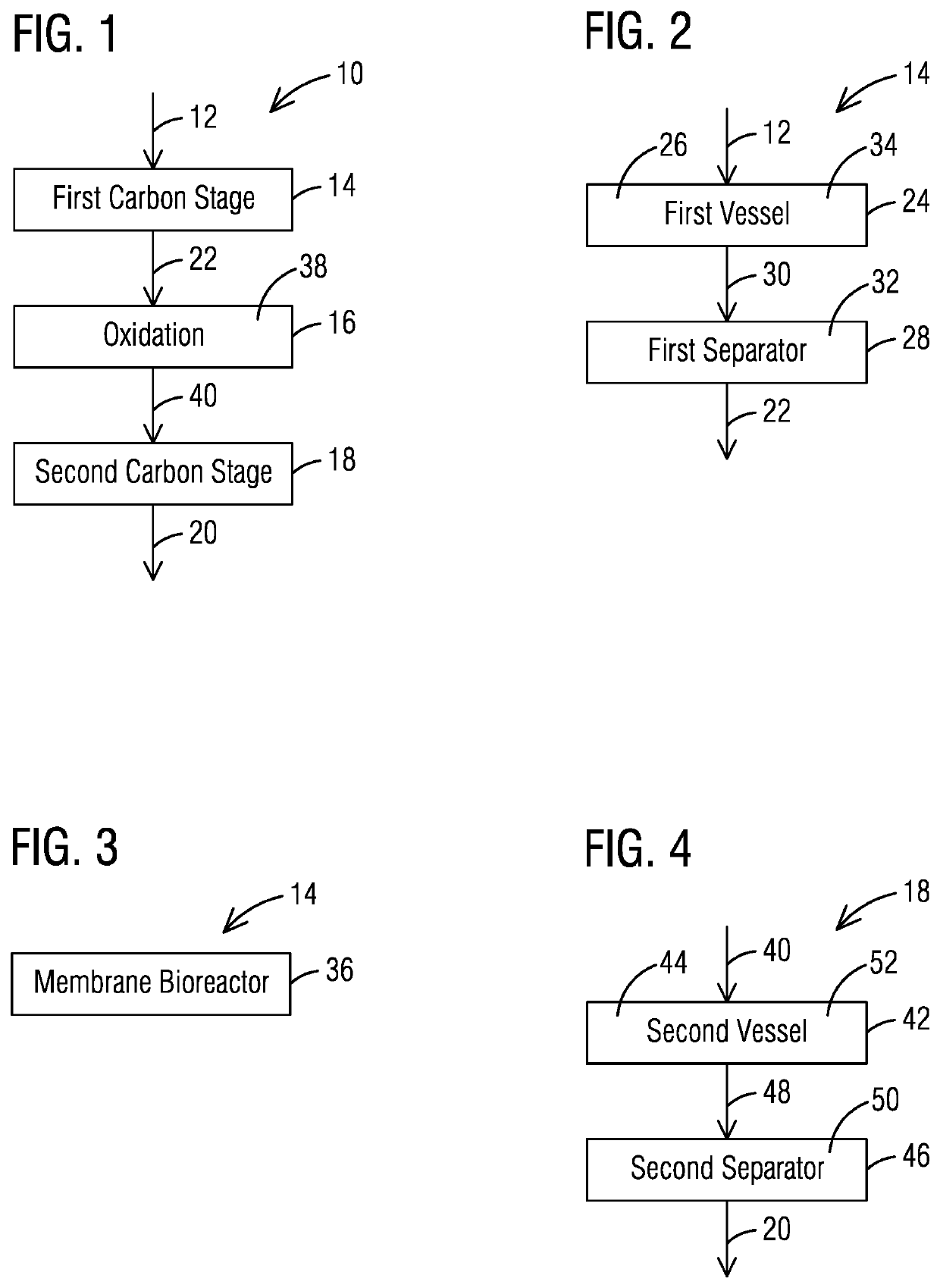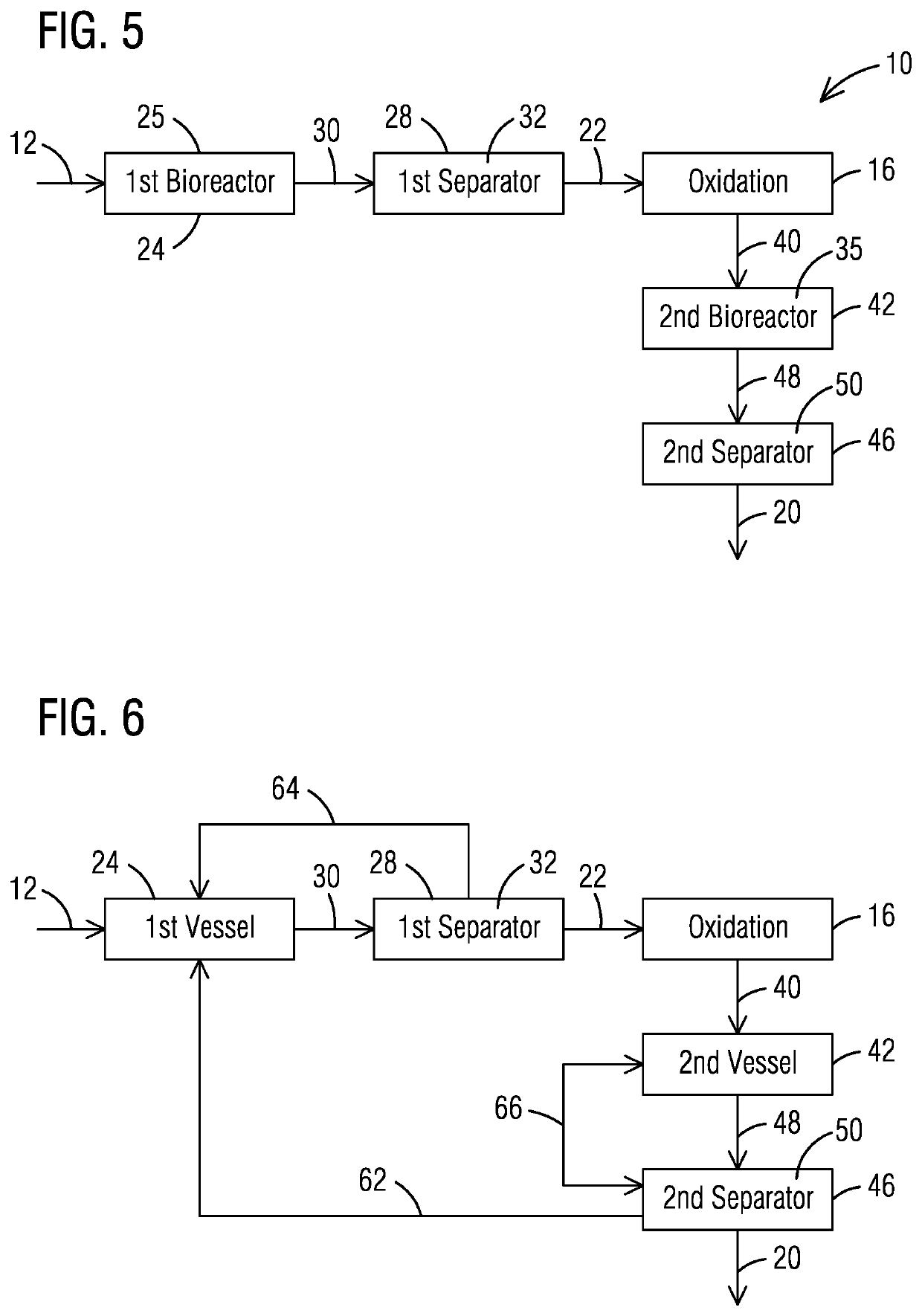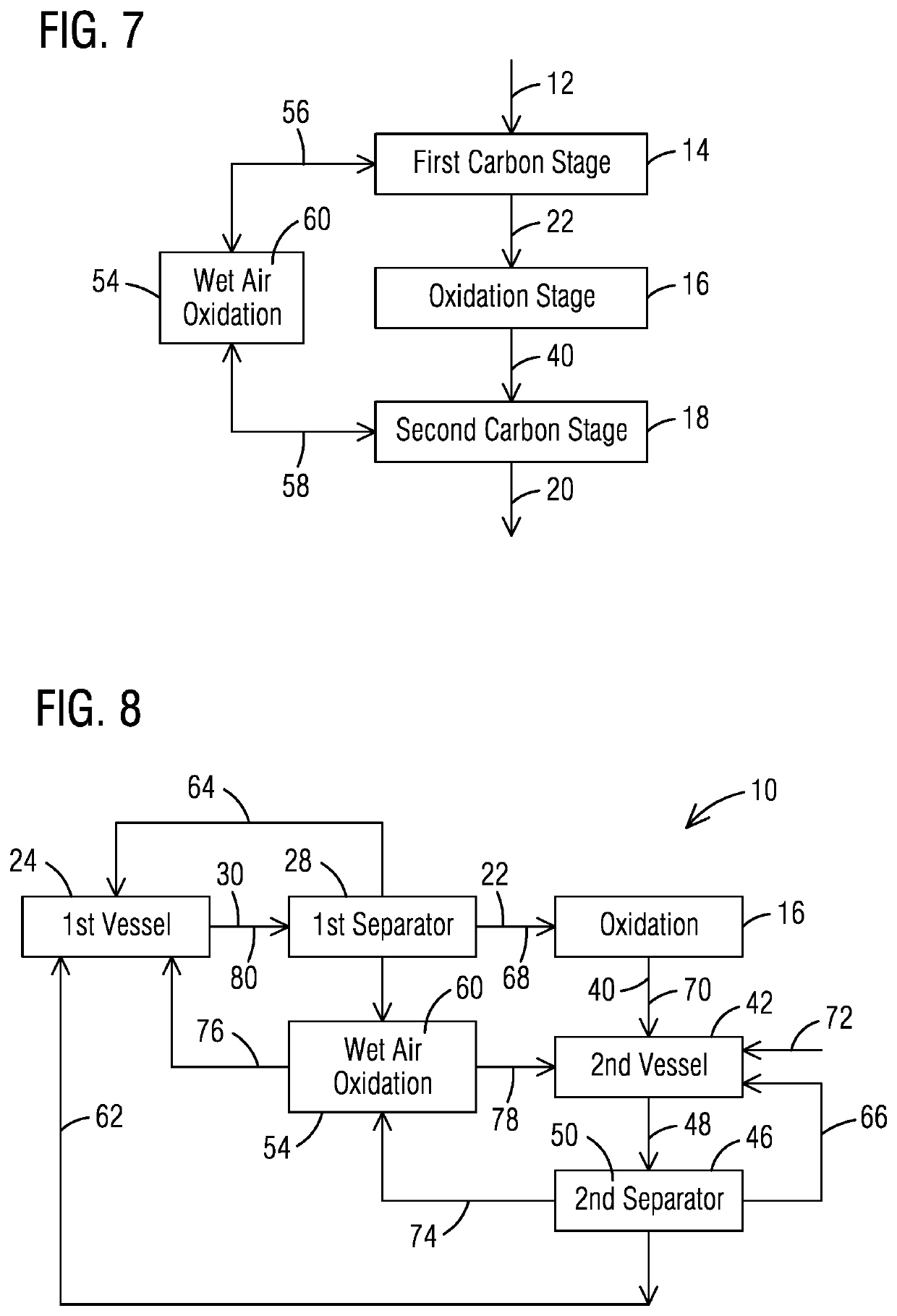Method and system for reducing total carbon consumption in the generation of low chemical oxygen demand treated streams
- Summary
- Abstract
- Description
- Claims
- Application Information
AI Technical Summary
Benefits of technology
Problems solved by technology
Method used
Image
Examples
Embodiment Construction
[0019]Now referring to the figures, FIG. 1 illustrates embodiment of a water treatment system 10 in accordance with an aspect of the present invention for treating a wastewater stream 12 comprising an amount of chemical oxygen demand (COD) therein, which also reduces an overall carbon requirement for the system. As shown, the wastewater stream 12 flows through (in flow series) a first carbon stage 14, an oxidation unit 16, and a second carbon stage 18 to provide a treated stream 20 having an amount of COD below a maximum allowable limit (e.g., 50 mg / L, and in certain embodiments 30 mg / L). The wastewater stream 12 may refer to any fluid comprising an amount of chemical oxygen demand (COD) therein. In certain embodiments, the wastewater stream 12 may comprise one from an industrial, agricultural, or municipal source. In certain embodiments, the COD comprises an amount of organic and inorganic contaminants. In addition, in certain embodiments, the wastewater stream 12 is one that inclu...
PUM
| Property | Measurement | Unit |
|---|---|---|
| Concentration | aaaaa | aaaaa |
| Chemical oxygen demand (mass) | aaaaa | aaaaa |
| Biodegradability | aaaaa | aaaaa |
Abstract
Description
Claims
Application Information
 Login to View More
Login to View More - R&D
- Intellectual Property
- Life Sciences
- Materials
- Tech Scout
- Unparalleled Data Quality
- Higher Quality Content
- 60% Fewer Hallucinations
Browse by: Latest US Patents, China's latest patents, Technical Efficacy Thesaurus, Application Domain, Technology Topic, Popular Technical Reports.
© 2025 PatSnap. All rights reserved.Legal|Privacy policy|Modern Slavery Act Transparency Statement|Sitemap|About US| Contact US: help@patsnap.com



